From Manual to Smart: Pallet Inverters Transforming Romania's Material Handling
Are your warehouse operations held back by slow, labor-intensive processes? Many factories still rely on manually restacking goods, a method that eats up time, increases the risk of product damage, and exposes workers to potential injuries. This inefficiency creates a bottleneck that slows down your entire supply chain. It's a persistent problem that quietly drains your profits and limits your growth, a challenge I've seen firsthand in facilities across the globe, from small workshops to massive industrial plants.
A pallet inverter is a smart automation solution that transforms material handling by mechanizing the process of transferring loads from one pallet to another. This equipment quickly and safely rotates a full pallet load, allowing for the easy replacement of broken pallets, switching to in-house or shipping pallets, or recovering damaged goods at the bottom of a stack. By automating this task, companies in Romania and worldwide are drastically cutting labor costs, minimizing product damage, and significantly boosting operational speed and safety.
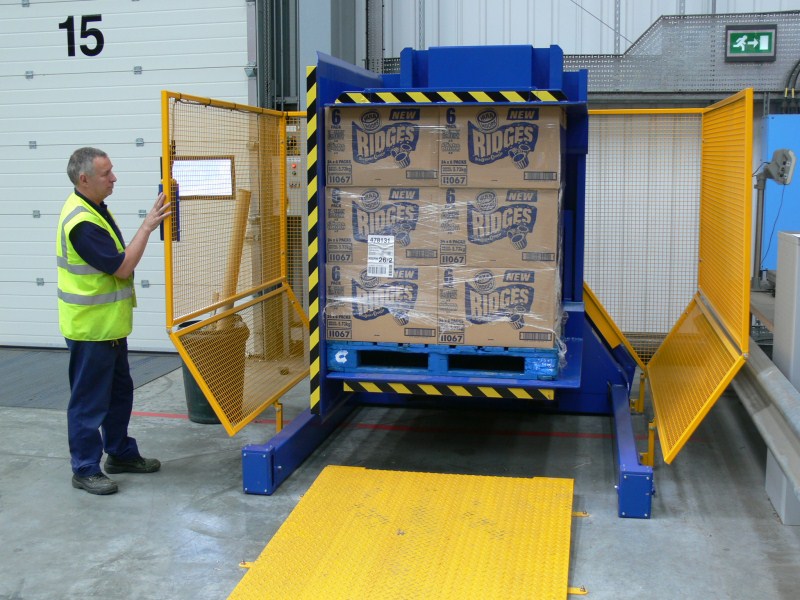
This shift from manual labor to smart automation is more than just an equipment upgrade. It's a strategic move. It unlocks new levels of efficiency that can redefine what's possible for your production floor. Based on my years of designing and implementing these systems, I can tell you the impact is immediate and measurable. Let's explore the real-world costs of outdated methods and see exactly how a modern pallet inverter can become a cornerstone of your facility's success.
What Are the Real Costs of Sticking with Manual Pallet Handling?
Do you ever calculate the hidden expenses tied to your manual pallet handling? It’s easy to see the direct labor costs on a spreadsheet. But the true financial drain is often buried in damaged goods, workplace accidents, and missed opportunities. These hidden costs accumulate day after day, eroding your profit margins. I remember visiting a facility in Romania where the manager was proud of his experienced manual handling team, but he couldn't figure out why his damage rates and insurance premiums were so high. The problem was right in front of him, disguised as "business as usual."
The real costs of manual pallet handling extend far beyond wages. They include significant expenses from product damage during manual restacking, higher insurance premiums due to increased worker injury risk, and lost productivity from slow, inefficient processes. These combined factors create a substantial, yet often overlooked, financial burden on the business, impacting overall profitability and competitiveness.
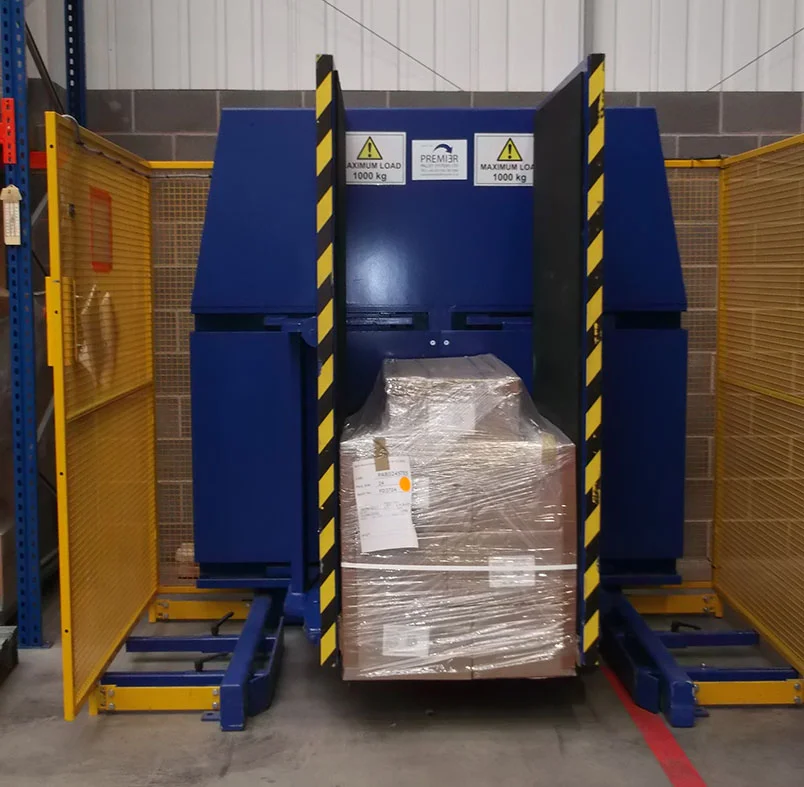
When I work with factory owners like you, we need to look deeper than the surface. We have to dissect the entire process to uncover these hidden costs. It's about thinking like an engineer and a business owner at the same time. The goal is not just to identify problems but to quantify them. Only then can we see the true value of investing in a smarter solution.
The Hidden Drain on Your Bottom Line
Manual handling is a direct hit to your finances in ways that are not immediately obvious. The most significant cost is often product damage. Every time a team manually transfers goods from one pallet to another, there is a risk of dropping boxes, denting containers, or contaminating the product. For a steel plant owner like you, Javier, imagine transferring heavy, precisely manufactured components. A single slip could render a high-value part useless. These losses add up. A 1% damage rate in a multi-million dollar operation is a substantial figure.
Labor Inefficiency and Safety Risks
Your people are your most valuable asset, but manual restacking is not the best use of their skills. It's a repetitive, physically demanding task that leads to fatigue and a higher chance of error. More importantly, it carries significant safety risks. Back strains, sprains, and crush injuries are common. These lead to workers' compensation claims, increased insurance costs, and lost workdays. An automated system like a pallet inverter removes the physical strain, protecting your team and your business from these liabilities. It frees up your skilled workers to focus on more value-added tasks, like quality control or machine operation, which directly contributes to your goal of higher productivity.
The True Cost: A Comparative Look
To make this concrete, let's compare the costs. A manual process requires multiple workers and more time. An automated process with a pallet inverter requires one operator and a fraction of the time. Let's break it down in a table.
| Cost Factor | Manual Handling (Per Pallet) | Pallet Inverter (Per Pallet) | Annual Impact (Example: 50 Pallets/Day) |
|---|---|---|---|
| Labor Time | 2 workers, 15 minutes (30 min total) | 1 operator, 3 minutes | Saves over 3,300 labor hours/year |
| Product Damage Rate | 1-2% (average) | < 0.1% | Reduces waste and rework costs significantly |
| Worker Safety | High risk of strain/injury | Minimal risk | Lowers insurance premiums and lost time |
| Operational Speed | Bottleneck in logistics flow | Seamless, predictable flow | Increases overall plant throughput |
This data isn't just theoretical. I've seen these results implemented. The transition is not just about reducing costs; it's about building a more resilient, efficient, and safer operation.
How Does a Pallet Inverter Directly Boost Operational Efficiency?
Are you constantly looking for ways to get more out of your existing facility? The pressure to increase output without major capital expansion is immense. You might be focused on big-ticket items like production line upgrades, but sometimes the biggest gains come from fixing the small, persistent bottlenecks. Manual pallet swapping is one of those bottlenecks. It seems minor, but its ripple effect can slow down your entire logistics chain, from receiving raw materials to shipping finished goods.
A pallet inverter directly boosts operational efficiency by transforming a slow, multi-step manual process into a single, automated action. It drastically reduces the time and labor required to transfer loads, allowing for faster turnaround in receiving and shipping. This automation minimizes handling errors, protects product integrity, and creates a smooth, predictable workflow. The result is a significant increase in throughput and better utilization of both labor and space.
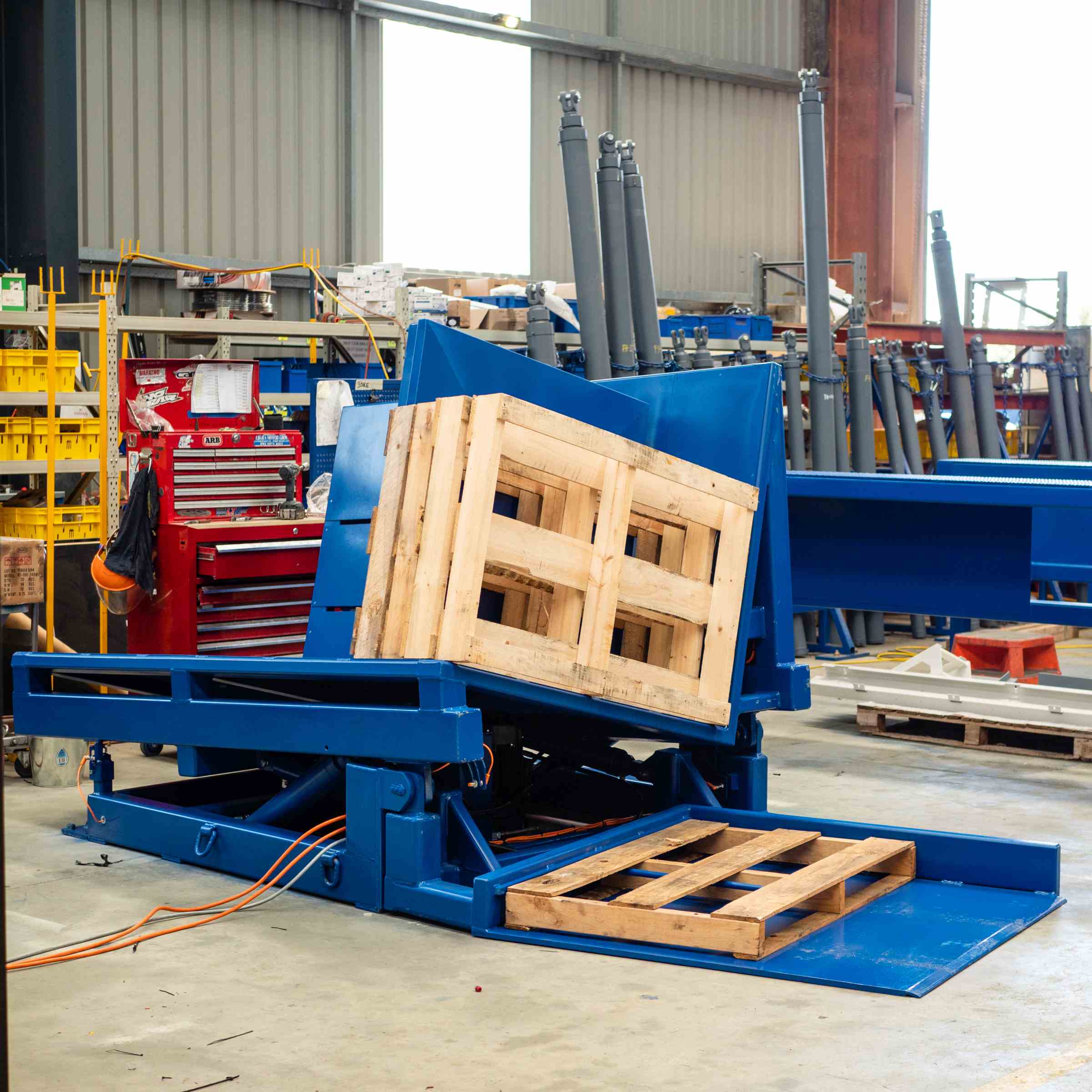
This is not just about moving faster. It is about creating a more intelligent and reliable system. When you automate a process like pallet handling, you introduce predictability. You know exactly how long each cycle will take. This allows for better planning and scheduling, which is critical for achieving a goal like 95% equipment uptime. Let's dive deeper into the specific ways this single piece of equipment can overhaul your efficiency.
Accelerating Throughput from Dock to Stock
The journey of materials through your plant needs to be fluid. A pallet inverter acts as an accelerator at critical transition points. Think about your receiving dock. When a shipment arrives on low-quality or international pallets, you need to transfer it to your own high-grade, internal-use pallets. Manually, this is a slow jam. With an inverter, a forklift driver can perform the swap in minutes without ever leaving the cab in some automated systems. The same principle applies to shipping. You can quickly switch finished products to cheaper, one-way shipping pallets right before loading, keeping your expensive, high-quality pallets in-house. This speed directly translates to more trucks processed per day and a more agile supply chain.
Revolutionizing Inventory Management
Efficiency is also about control. Damaged goods found at the bottom of a pallet stack can be a nightmare. Manually, accessing them means de-stacking the entire pallet, a time-consuming and risky task. A pallet inverter allows you to rotate the entire load 180 degrees, bringing the bottom layer to the top for easy inspection and replacement. This capability is a game-changer for quality control and inventory management. You can address issues immediately, preventing damaged goods from entering your production line or reaching a customer. For industries with perishable or sensitive materials, this quick access can be the difference between saving a batch and writing it off as a loss.
Creating a Lean and Agile Workflow
A pallet inverter supports lean manufacturing principles. It eliminates the "waste" of unnecessary motion, waiting time, and defects (product damage). By standardizing the pallet transfer process, you create a more predictable and streamlined workflow. This has a cascading effect on your entire operation.
| Efficiency Metric | Before Pallet Inverter | After Pallet Inverter | Impact on Operations |
|---|---|---|---|
| Pallet Swap Time | 15-20 minutes | 2-3 minutes | 85% time reduction per cycle |
| Labor Requirement | 2-3 workers | 1 operator | Frees up skilled labor for other tasks |
| Workflow Predictability | Variable, depends on team | Consistent, machine-timed | Enables better scheduling (MES integration) |
| Space Requirement | Large open area for restacking | Compact machine footprint | Frees up valuable floor space |
This level of improvement is how you begin to push your overall equipment effectiveness (OEE) and achieve ambitious goals like a 10% reduction in unit energy consumption, because efficient processes are energy-efficient processes.
What Key Features Should You Look for in a Pallet Inverter for Seamless Integration?
You've decided that automation is the right path, but now you face another challenge: choosing the right machine. Not all pallet inverters are created equal. Buying a piece of equipment that doesn't fit your workflow or your materials is just as bad as sticking with an old process. You need a machine that integrates smoothly into your existing operations and is robust enough for your specific environment, whether it's food processing or a demanding steel mill. The wrong choice can lead to downtime, maintenance headaches, and a poor return on your investment.
For seamless integration, look for key features like a robust and adjustable clamping system that can handle your specific load sizes and weights without causing damage. The control system is also critical; it should be intuitive for operators and, ideally, offer connectivity options for integration with your existing Manufacturing Execution System (MES) or warehouse management software. Finally, prioritize comprehensive safety features, such as light curtains, safety fencing, and emergency stops, to ensure the machine operates safely alongside your team.
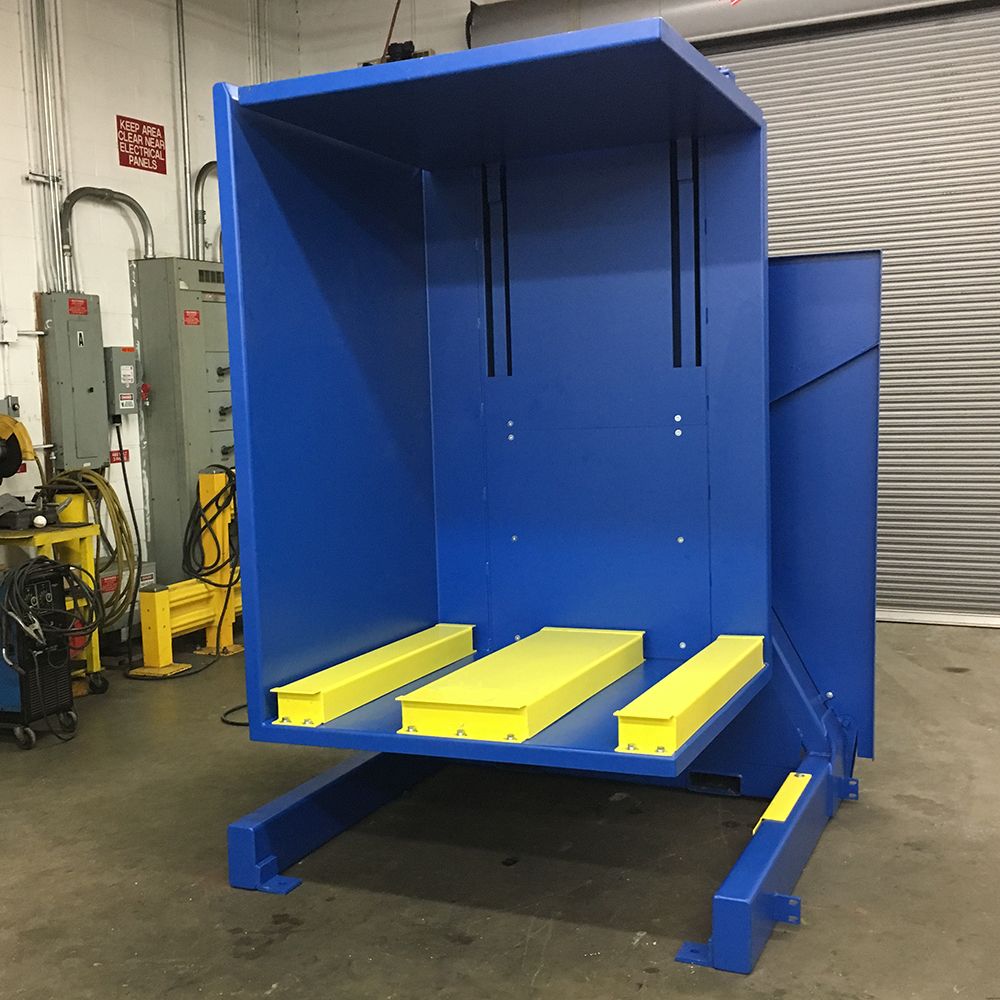
As an engineer who has designed these machines, I focus on three core areas: durability, control, and safety. A machine is a long-term investment, especially in a tough industrial setting. It must be built to last. It also needs to be smart enough to talk to your other systems. And above all, it must be safe for the people who operate it. Let's break down what to look for in each of these areas.
Build Quality and Durability for Demanding Environments
Your environment dictates the type of machine you need. For a steel plant owner like Javier, a standard, light-duty inverter will not survive. You need to scrutinize the build quality.
- Frame Construction: Look for heavy-gauge steel, welded frames, not bolted ones. Welds provide superior rigidity and longevity under heavy, repeated use.
- Hydraulics and Powertrain: The hydraulic system is the heart of the machine. Ask about the brand of the components. Reputable manufacturers use high-quality pumps, cylinders, and hoses that resist leaks and failures. A robust electric motor and gearbox are equally important for consistent, reliable power.
- Load Capacity: Be realistic about your needs. Always choose a machine with a capacity that is at least 25% higher than your heaviest typical load. This provides a safety margin and reduces strain on the components over time.
Smart Controls and Connectivity
A modern pallet inverter should be a part of your digital transformation, not an obstacle to it. This comes down to the control system.
- User Interface (HMI): The machine should have a simple, intuitive Human-Machine Interface. A touchscreen with clear graphics and diagnostics helps operators run the machine efficiently and troubleshoot minor issues without calling a technician.
- Automation Level: Do you need a semi-automatic machine where an operator initiates the cycle, or a fully automatic, inline system that's part of a conveyor line? Your choice depends on your throughput needs and existing infrastructure.
- MES/IoT Integration: This is crucial for achieving goals like total production visualization. Ask if the machine's PLC (Programmable Logic Controller) can communicate with your plant's MES. This allows you to track cycles, monitor performance, and schedule predictive maintenance, which is a cornerstone of reaching 95% equipment uptime.
Essential Features Checklist
Here is a checklist to use when evaluating potential pallet inverters. This ensures you are looking at a strategic partner, not just a supplier.
| Feature Category | What to Look For | Why It Matters for Integration |
|---|---|---|
| Clamping System | Adjustable pressure, non-marking surfaces | Protects product integrity for various load types. |
| Rotation Mechanism | Smooth, controlled 180-degree rotation | Prevents load shifting and damage during the cycle. |
| Control Panel | Intuitive HMI, PLC with connectivity ports | Simplifies operation and enables data integration. |
| Safety Features | Light curtains, safety gates, E-stops | Protects personnel and ensures compliance. |
| Construction | Heavy-duty welded steel frame, quality hydraulics | Ensures long-term reliability in industrial environments. |
| Footprint & Layout | In-line or standalone, forklift accessible | Must fit your available space and workflow. |
Choosing the right machine is a technical decision with long-term strategic implications. It pays to be thorough.
How Can We Justify the Investment in a Pallet Inverter with a Clear ROI?
As a business owner, every investment must answer one question: what is the return? A new piece of equipment can have all the best features, but if it doesn't positively impact the bottom line, it's a non-starter. You are under pressure to manage capital, and you need to be certain that any investment will pay for itself and contribute to your goal of improving profit margins. This is where many great ideas fail—not because they are bad ideas, but because the financial case wasn't made clearly enough.
You can justify the investment in a pallet inverter by calculating a clear Return on Investment (ROI) based on direct cost savings. This includes quantifiable reductions in labor hours, lower expenses from product damage, and decreased insurance and compensation costs related to worker injuries. When these tangible savings are totaled, the payback period for the equipment is often surprisingly short, typically between 12 to 24 months.
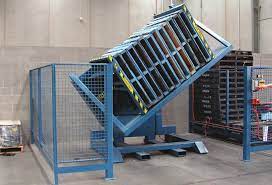
When I started my own factory, I had to be ruthless with my budget. I became an expert at calculating ROI, not just for my clients, but for myself. The key is to look at both the hard numbers and the softer, strategic benefits. A pallet inverter is a perfect example of an investment where the numbers are compelling and the strategic value is undeniable. Let's build the business case together.
Calculating Your Payback Period
The most direct way to justify an investment is to calculate its payback period. This is the amount of time it takes for the savings generated by the equipment to equal its purchase price. The formula is simple: Payback Period = Initial Investment / Annual Savings. Let's break down the "Annual Savings" part.
- Labor Savings: This is the easiest to calculate.
(Hourly wage + benefits) x (Hours saved per day) x (Workdays per year). As we saw earlier, you can save thousands of hours per year. - Product Damage Savings: Analyze your current rate of damage from manual handling.
(Average value of a pallet load) x (Damage rate percentage) x (Number of pallets handled per year). Reducing this rate from 1% to 0.1% generates substantial savings. - Injury and Insurance Savings: This is harder to quantify but is very real. You can use industry-average costs for a back injury claim or ask your insurance provider about potential premium reductions for implementing safety-enhancing automation.
Sample ROI Calculation
Let's put some numbers to this. Assume a mid-range pallet inverter costs $40,000.
| Savings Category | Calculation | Annual Savings |
|---|---|---|
| Labor Savings | 1 worker saved @ $25/hr, 6 hrs/day | $39,000 |
| Damage Reduction | 1% damage reduction on $1.5M of handled goods | $15,000 |
| Total Annual Savings | $54,000 | |
| Payback Period | $40,000 / $54,000 | ~9 months |
With a payback period of less than a year, the investment is no longer a cost; it's a financial strategy. It directly supports your goal of lowering overall operating costs by 8% or more.
Beyond the Numbers: Strategic and Intangible Benefits
The ROI calculation is powerful, but it doesn't tell the whole story. The strategic benefits are just as important for a forward-thinking leader.
- Increased Capacity: Faster handling means you can process more goods with the same facility and staff, directly impacting your top-line revenue potential.
- Improved Employee Morale: Removing a physically punishing and undesirable job improves morale and reduces employee turnover. A happier, more stable workforce is a more productive workforce.
- Enhanced Brand Reputation: Shipping products on clean, stable pallets with zero damage enhances your reputation for quality and reliability with your customers.
- Future-Proofing Your Operation: Investing in automation is a step towards a smart factory. It builds a foundation for further digitalization and keeps you competitive in an industry that is constantly evolving.
This is why I see this equipment not just as a machine, but as a strategic partnership for growth.
Conclusion
Ultimately, pallet inverters are a key to unlocking efficiency. They reduce costs, improve safety, and build a more resilient supply chain, transforming manual processes into a smart, automated advantage.
My Insights
Javier, when I look at your profile, I don't just see a CEO of a steel mill. I see a fellow engineer who made the journey to business owner. We share a similar path. We know what it's like to be responsible for every detail, from the heat of the furnace to the numbers on the balance sheet. You’ve built an impressive operation by focusing on innovation, like your waste heat recovery system. That tells me you understand that smart investments in technology are what separate leaders from the rest of the pack.
A pallet inverter might seem like a small detail in a 2-million-ton steel operation. But you and I both know that excellence is found in mastering the details. Your challenge with aging equipment and pressure on costs is familiar to me. The solution isn't always a billion-dollar overhaul. Sometimes, the most powerful changes come from identifying and fixing a persistent, seemingly small inefficiency. Automating your pallet handling is one of those changes. It's a targeted investment with a clear, fast ROI that addresses your goals of cost reduction, efficiency, and safety all at once. It's a practical, powerful step on your journey of digital transformation. This is the kind of strategic move that we, as engineers turned owners, can build our success on.



